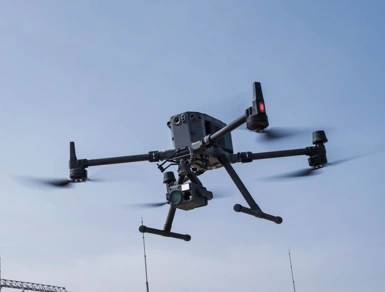- Incorrect Calibration of Equipment
Survey instruments must be properly calibrated to ensure accurate measurements. Regular calibration ensures accuracy and compliance with ISO/IEC 17025 and ISO 9000 standards. Skipping this step can lead to major measurement errors that throw entire projects off course.
How to Avoid It: Regularly check and calibrate your equipment before each survey. When hiring Survey equipment from GAP, you can rest assured that all our equipment, including Total Stations, GNSS Receivers and Laser Scanners, is meticulously maintained and calibrated, by our expert team, for optimal accuracy.
- Poor Control Point Selection
Choosing weak or unreliable control points can compromise the accuracy of your survey. This can lead to incorrect positioning of structures and misalignment issues.
How to Avoid It: Select stable, well-distributed control points and cross-check these with previous surveys. Our expert survey team can provide guidance on the best control point placement for your specific project. Additionally, using high-precision GNSS receivers, robotic total stations and high-quality tripods from GAP Hire Solutions can improve point readability. These advanced tools help ensure consistency and accuracy, reducing errors and improving overall survey efficiency.
- Ignoring Environmental Factors
Weather conditions and terrain can significantly impact survey accuracy. Factors such as temperature fluctuations, wind and atmospheric pressure can distort measurements.
How to Avoid It: Where possible, plan surveys around stable weather conditions. Our survey fleet includes advanced GNSS and Total Stations, designed to perform reliably in varying conditions. Additionally, our range of UAV (drone) surveying solutions also allows for efficient terrain mapping and data collection in difficult-to-access areas, ensuring accuracy regardless of environmental challenges.
- Failure to Account for Human Error
Even with the best equipment, human error remains a leading case of survey mistakes. Misreading measurements, inputting incorrect data or failing to double-check results can all contribute to costly issues.
How to Avoid It: Always double-check measurements and data entries. Use automated data collection systems where possible. Our range of robotic total stations and GNSS solutions help reduce human error by automating key processes such as data collection, coordinate calculations and real-time positioning. These tools not only improve efficiency but also ensure greater accuracy by minimising manual input errors. Our data logging and processing software further enhances precision, allowing surveyors to validate measurements instantly and detect discrepancies before they become major issues.
- Using Outdate or Inappropriate Equipment
Outdated or unsuitable equipment leads to inaccurate readings and costly project risks. Modern tools improve efficiency, accuracy, and ease of use—key to a successful survey.
How to Avoid It: Hire modern, high-quality surveying equipment suited to your specific project needs. GAP offers an extensive fleet of the latest survey equipment including total stations, GNSS systems, 3D laser scanners and UAV (drone) surveying solutions, all designed to provide superior accuracy, efficiency and ease of use. By hiring from GAP, you also benefit from regular maintenance and calibration, ensuring your equipment performs optimally for every survey task.
Get it Right with GAP Survey & Safety
Avoiding these common mistakes can mean the difference between a seamless project and costly setbacks. At GAP Hire Solutions, you gain access to an expert survey team and regularly calibrated survey equipment to keep your survey’s precise and reliable.
Need expert survey solutions? Browse GAP’s Survey & Safety equipment fleet here or get in touch at survey@gap-group.co.uk.





